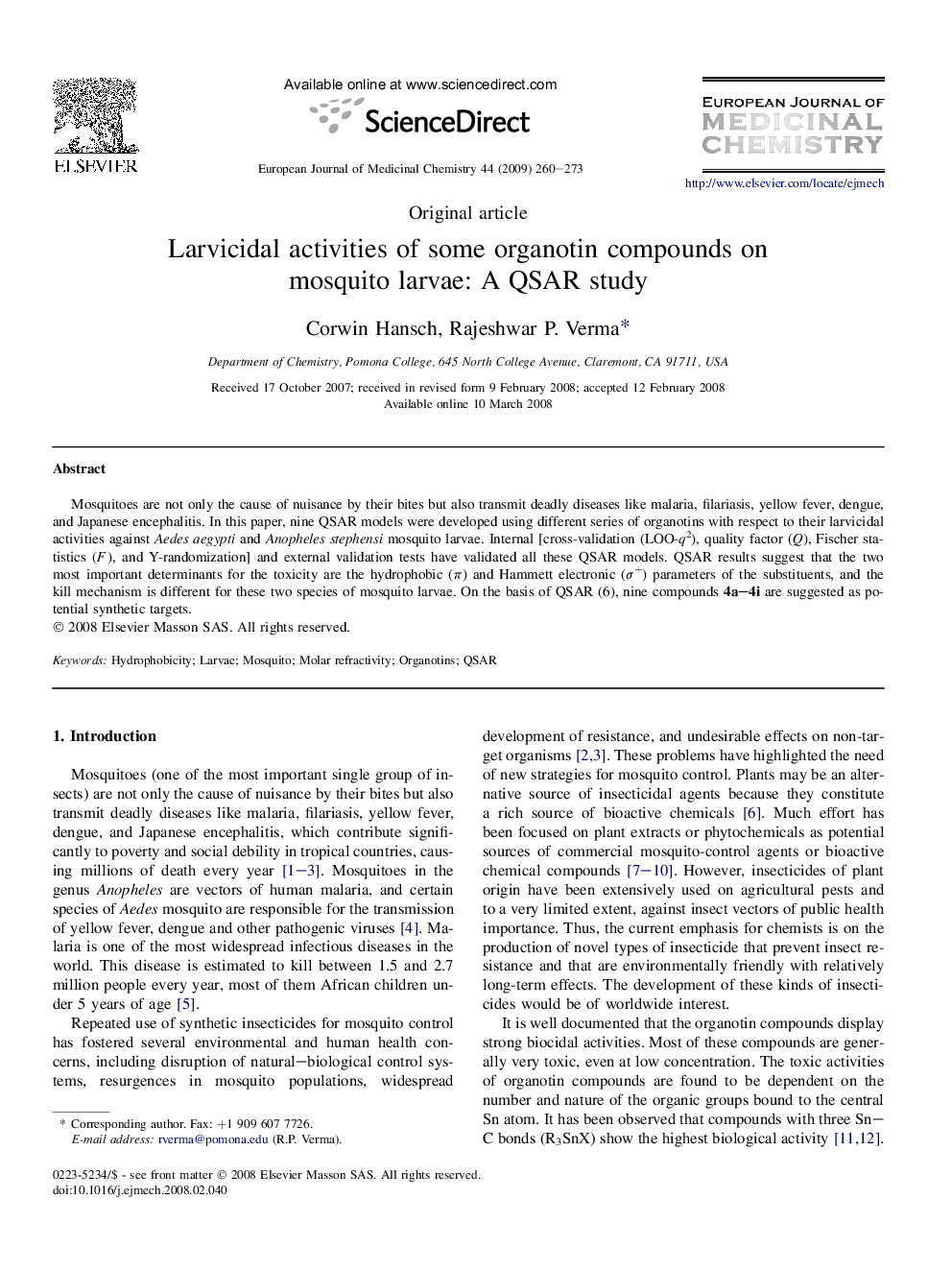| Article ID | Journal | Published Year | Pages | File Type |
|---|---|---|---|---|
| 1398048 | European Journal of Medicinal Chemistry | 2009 | 14 Pages |
Mosquitoes are not only the cause of nuisance by their bites but also transmit deadly diseases like malaria, filariasis, yellow fever, dengue, and Japanese encephalitis. In this paper, nine QSAR models were developed using different series of organotins with respect to their larvicidal activities against Aedes aegypti and Anopheles stephensi mosquito larvae. Internal [cross-validation (LOO-q2), quality factor (Q), Fischer statistics (F), and Y-randomization] and external validation tests have validated all these QSAR models. QSAR results suggest that the two most important determinants for the toxicity are the hydrophobic (π) and Hammett electronic (σ+) parameters of the substituents, and the kill mechanism is different for these two species of mosquito larvae. On the basis of QSAR (6), nine compounds 4a–4i are suggested as potential synthetic targets.
Graphical abstractFigure optionsDownload full-size imageDownload as PowerPoint slide
